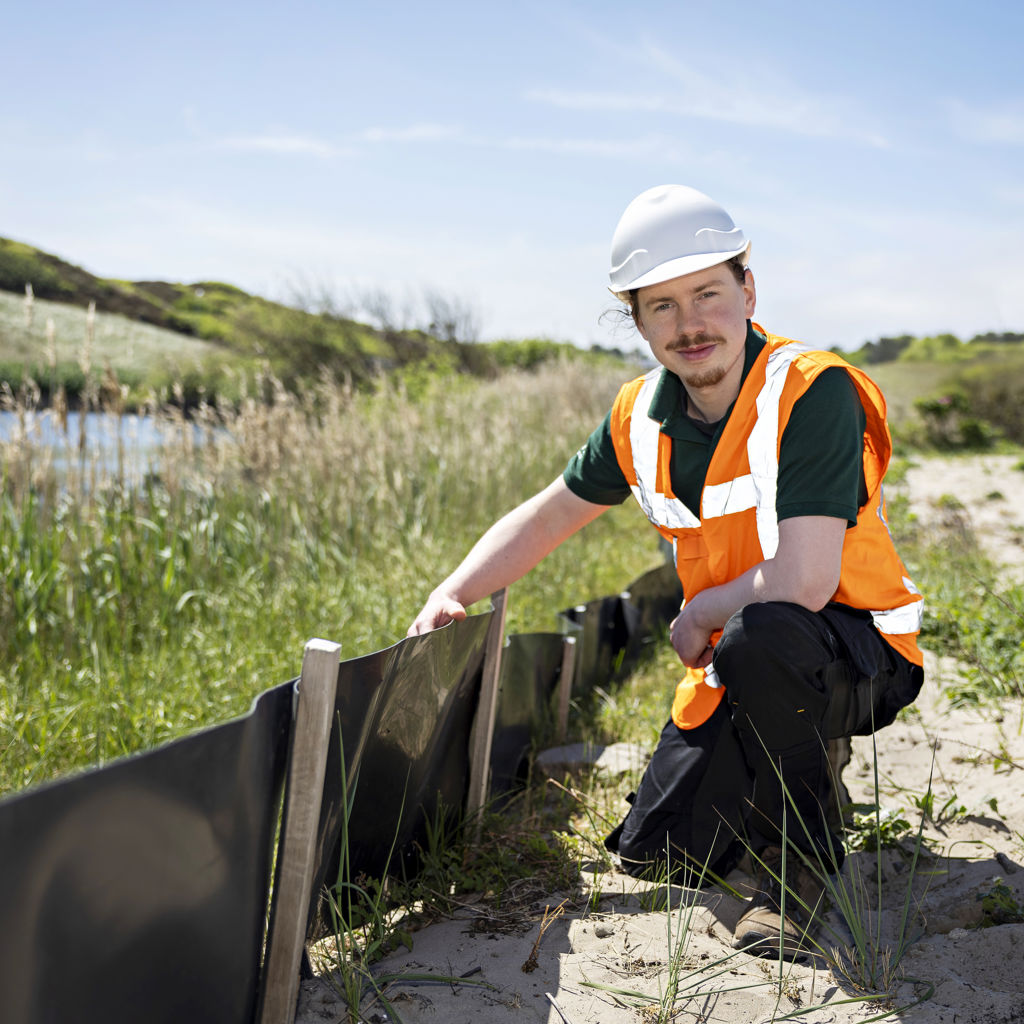Working together with nature
Building next to a Natura 2000 area requires diligence, cooperation, and above all, respect for nature. Ecologists play an essential role during the realization of the PALLAS project. They map out the local flora and fauna, advise on protection measures and oversee the execution of the construction work to ensure full compliance and all applicable laws and regulations. Thanks to their expertise, we can build with care for nature.
Mathijs and Ewoud work at Kwinfra, a consultancy specializing in environment and ecology. In this interview, they offer insight into their work and how they contribute to preserving the natural features of this unique area.
Can you shortly explain what does it mean to be an ecologist within the PALLAS project?
As ecologists from Kwinfra, we map out the local natural features and advise on how building activities can be carried out with minimal damage to nature.
Around the nuclear reactor is a special location even for ecologists, due to the combination of dune and polder landscapes, and the limited access for people. Because of strict security, there are areas where people rarely go, allowing nature to thrive. We visit the site weekly to survey the area and check if the ecological measures are effective. We also monitor if any conflicts arise between the work activities and the presence of rare flora and fauna. Based on our findings, we can, for example, advise scheduling work outside of vulnerable periods, designate protection zones, or compensate with new habitats.
What animal and plant species are present in this area and how is it ensured that they experience as little disturbance as possible from the construction activities?
The area between the Petten dunes is remarkably diverse due to the terrain’s relief and structure, as well as its connection to the coastal area and the adjacent polders. Sand lizards make use of open sand plains and rabbit burrows, while bird species, such as European stonechat, common whitethroat, and grey partridge, find suitable nesting locations here. In addition, there are plant communities featuring crowberry, mosses, and lichens. We also find traces of pine martens and foxes, and occasionally, the natterjack toad makes an appearance. During a nighttime survey, we observed that rabbits seem to seek refuge behind the fencing, where they may feel safer from predators such as foxes. All in all, the area is home to many valuable natural features that are important to preserve.
How were the natural features of the dunes taken into account during the planning and design phase?
Before construction began, extensive research was carried out to identify the species and habitats present in the area. Where impacts were unavoidable, exemptions were obtained that include strict conditions to minimize harm. In addition, opportunities are being used to enhance the quality of the natural environment, for example, by removing the invasive Japanese rose to improve the habitat for the sand lizard.
Which measures are been taken to prevent or minimize harm to flora and fauna?
· Wildlife fences keep animals safely outside the work area and are regularly inspected and repaired when necessary.
· Activities are scheduled as much as possible outside sensitive periods.
· Before any work begins, checks are carried out to ensure there are no nests or animals present.
· In unexpected situations, such as flocks of birds entering the work area, work is temporarily halted.
· In certain cases, other parts of the site are adapted or designated to support nature.
What happens when unexpected ecological risks or disturbances occur during construction?
Nature can sometimes be surprising. A concrete example is a colony of sand martins that suddenly settled along the access route for construction traffic. Since nests are always protected, immediate advice was given to partially close off the route. This way, the construction site remained accessible while the birds could continue nesting undisturbed. In such situations, work is always halted first, and then a solution is sought together with the competent authority.
What message do you want to share with the local residents and followers of the project regarding nature and the environment around the construction site?
The construction is taking place in a valuable dune area. For this reason, ecologists are present weekly to monitor compliance with agreements and to protect the existing nature. This way, we ensure that the dunes retain their value as a habitat, even while work is being carried out on a project of national importance on the same site.
Thanks to the fencing around the area, species like rabbits have found a refuge on the site, which is unique for the surroundings. All in all, there are many natural features present that are important to cherish.

